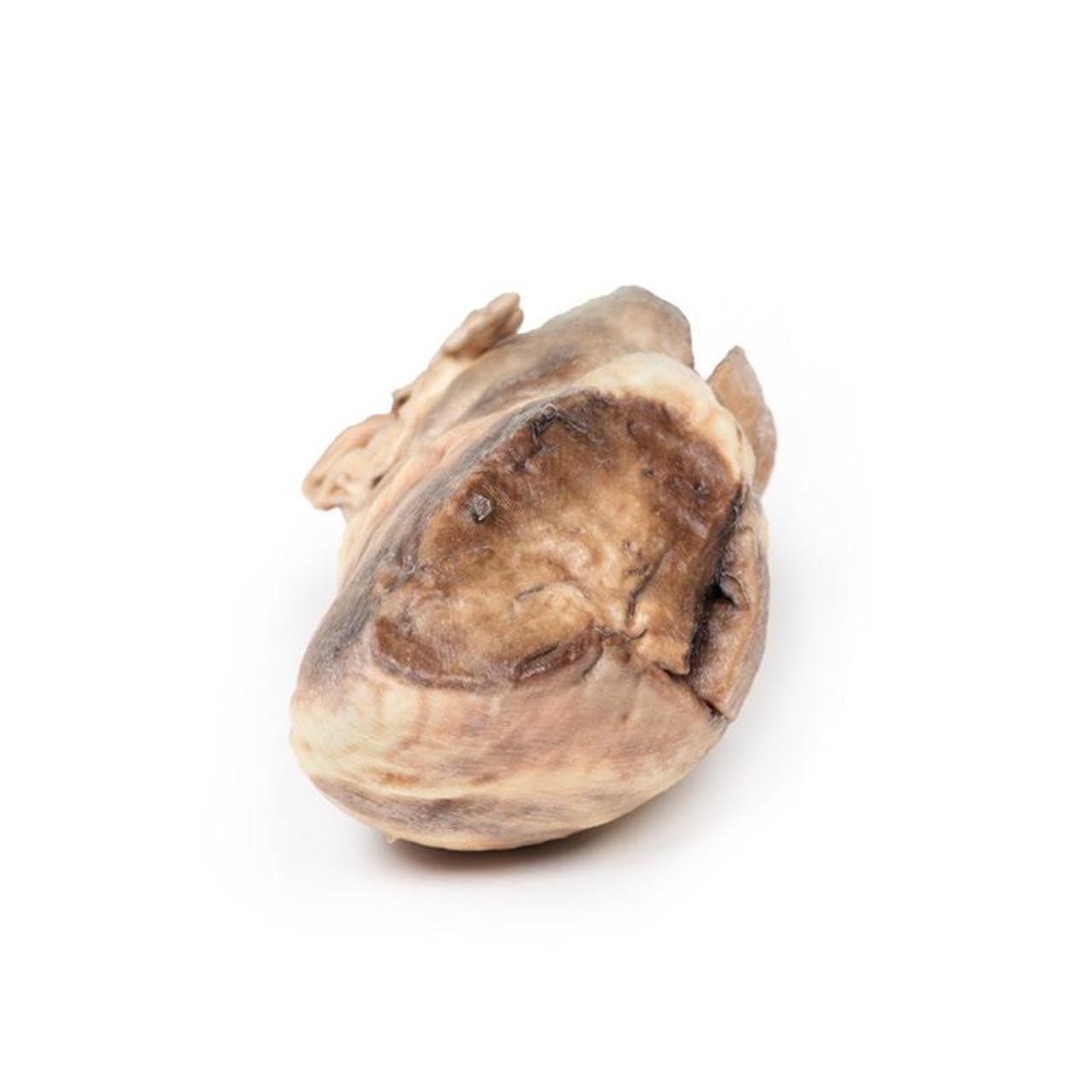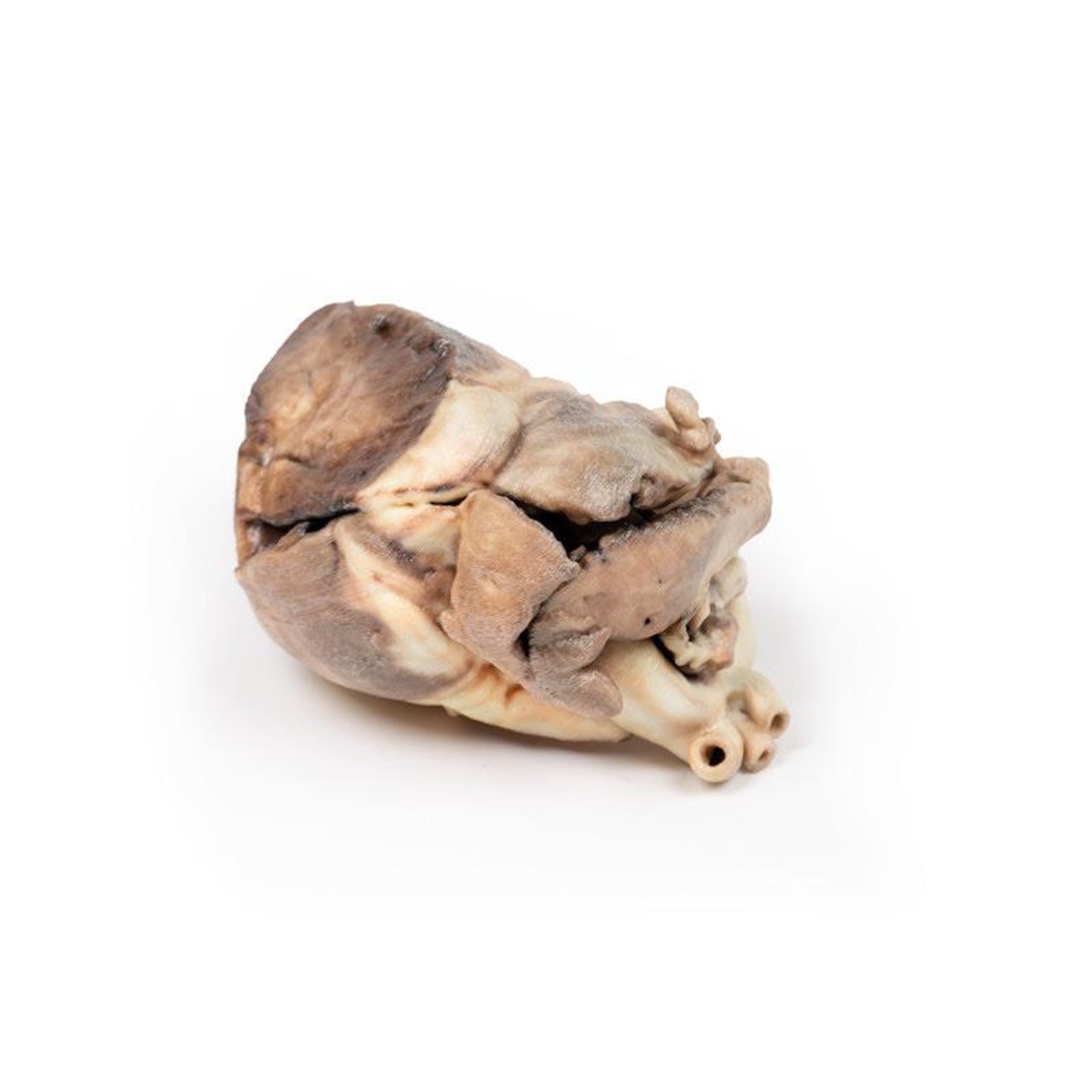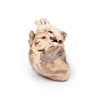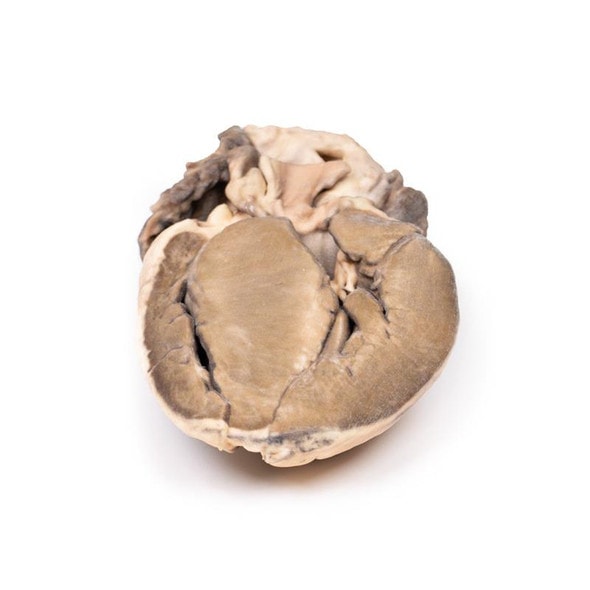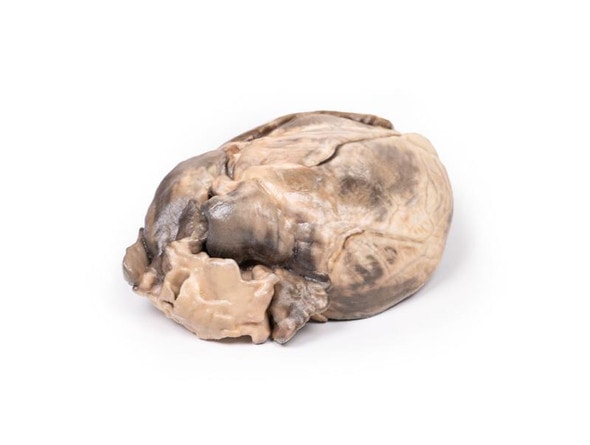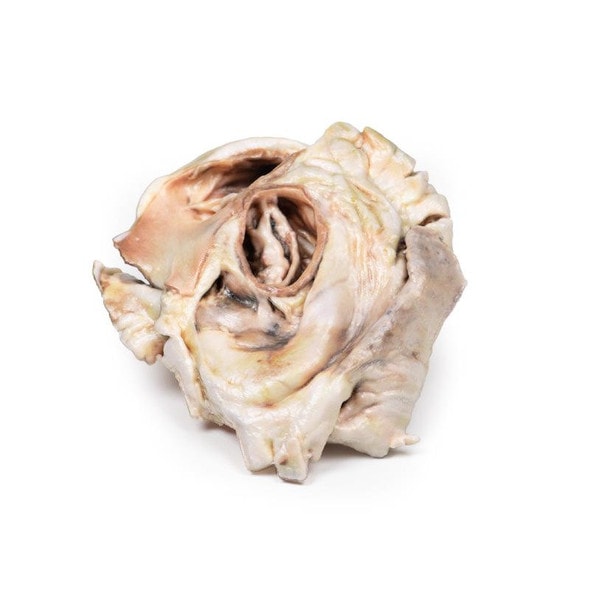Description
Developed from real patient case study specimens, the 3D printed anatomy model pathology series introduces an unmatched level of realism in human anatomy models. Each 3D printed anatomy model is a high-fidelity replica of a human cadaveric specimen, focusing on the key morbidity presentations that led to the deceasement of the patient. With advances in 3D printing materials and techniques, these stories can come to life in an ethical, consistently reproduceable, and easy to handle format. Ideal for the most advanced anatomical and pathological study, and backed by authentic case study details, students, instructors, and experts alike will discover a new level of anatomical study with the 3D printed anatomy model pathology series.
Clinical History
This male child had a cardiac murmur discovered at birth. He remained well until the age of 10 months. Two weeks before admission to hospital, he became languid, developed a slight cough, and suddenly gained a lot of weight. Ten days before admission he developed swelling of his extremities and face. On examination, he was a chubby child with a blood pressure of 90/59 mmHg. There was a fine thrill over the whole precordium, and a harsh systolic murmur maximal in the pulmonary area. There was oedema of the face and legs. After admission the child gained further weight, and there was no response to therapy. Death was due to congestive cardiac failure.
Pathology
The specimen is the child's heart. View from the left side and note the pulmonary artery has been opened to display the upper surface of the pulmonary valve. This abnormal valve consists of a thickened conical diaphragm, with an opening 2 mm in diameter at the apex. The opened pulmonary artery has a large post-stenotic dilatation. There is right-sided cardiac enlargement due to marked dilatation of the right atrium and right auricle (opened), and right ventricular hypertrophy (the wall has been cut in two places [one penetrating, one one not] to expose the hypertrophied myocardium). This is a pure pulmonary valve stenosis.
Further Information
Pulmonary stenosis represents about 7% of congenital heart disease. However, it can also occur later in life secondary to increased pulmonary pressures. In neonates, it may occur as an isolated defect or as part of a more complex lesion, such as the Tetralogy of Fallot. The latter is a combination of four congenital abnormalities, including a ventricular septal defect, pulmonary valve stenosis, a misplaced aorta and a right ventricular hypertrophy. Abnormalities similar to this specimen can now be corrected surgically.
The natural course of congenital pulmonary stenosis varies with age and severity at age of development. Pulmonary stenosis can be thought of on a scale of mild, moderate and severe. While mild pulmonary stenosis can remain asymptomatic and indolent without diagnosis for several years, moderate pulmonary stenosis can rapidly progress to severe stenosis. Severe pulmonary stenosis has significant effects on the heart due to increased pressures leading to right ventricular hypertrophy. Severe pulmonary stenosis is often associated with right ventricular outflow obstruction and subsequent cardiac failure. Thus, moderate to severe pulmonary stenosis may manifest as dyspnoea, chest pain or syncope.
Other complications of severe pulmonary stenosis, include infective endocarditis and arrhythmias caused by remodeling and scarring of the ventricular and atrial walls. Diagnosis of pulmonary stenosis is often achieved through transthoracic echocardiography. Other imaging modalities include MRI and CT.
Advantages of 3D Printed Anatomical Models
- 3D printed anatomical models are the most anatomically accurate examples of human anatomy because they are based on real human specimens.
- Avoid the ethical complications and complex handling, storage, and documentation requirements with 3D printed models when compared to human cadaveric specimens.
- 3D printed anatomy models are far less expensive than real human cadaveric specimens.
- Reproducibility and consistency allow for standardization of education and faster availability of models when you need them.
- Customization options are available for specific applications or educational needs. Enlargement, highlighting of specific anatomical structures, cutaway views, and more are just some of the customizations available.
Disadvantages of Human Cadavers
- Access to cadavers can be problematic and ethical complications are hard to avoid. Many countries cannot access cadavers for cultural and religious reasons.
- Human cadavers are costly to procure and require expensive storage facilities and dedicated staff to maintain them. Maintenance of the facility alone is costly.
- The cost to develop a cadaver lab or plastination technique is extremely high. Those funds could purchase hundreds of easy to handle, realistic 3D printed anatomical replicas.
- Wet specimens cannot be used in uncertified labs. Certification is expensive and time-consuming.
- Exposure to preservation fluids and chemicals is known to cause long-term health problems for lab workers and students. 3D printed anatomical replicas are safe to handle without any special equipment.
- Lack of reuse and reproducibility. If a dissection mistake is made, a new specimen has to be used and students have to start all over again.
Disadvantages of Plastinated Specimens
- Like real human cadaveric specimens, plastinated models are extremely expensive.
- Plastinated specimens still require real human samples and pose the same ethical issues as real human cadavers.
- The plastination process is extensive and takes months or longer to complete. 3D printed human anatomical models are available in a fraction of the time.
- Plastinated models, like human cadavers, are one of a kind and can only showcase one presentation of human anatomy.
Advanced 3D Printing Techniques for Superior Results
- Vibrant color offering with 10 million colors
- UV-curable inkjet printing
- High quality 3D printing that can create products that are delicate, extremely precise, and incredibly realistic
- To improve durability of fragile, thin, and delicate arteries, veins or vessels, a clear support material is printed in key areas. This makes the models robust so they can be handled by students easily.



